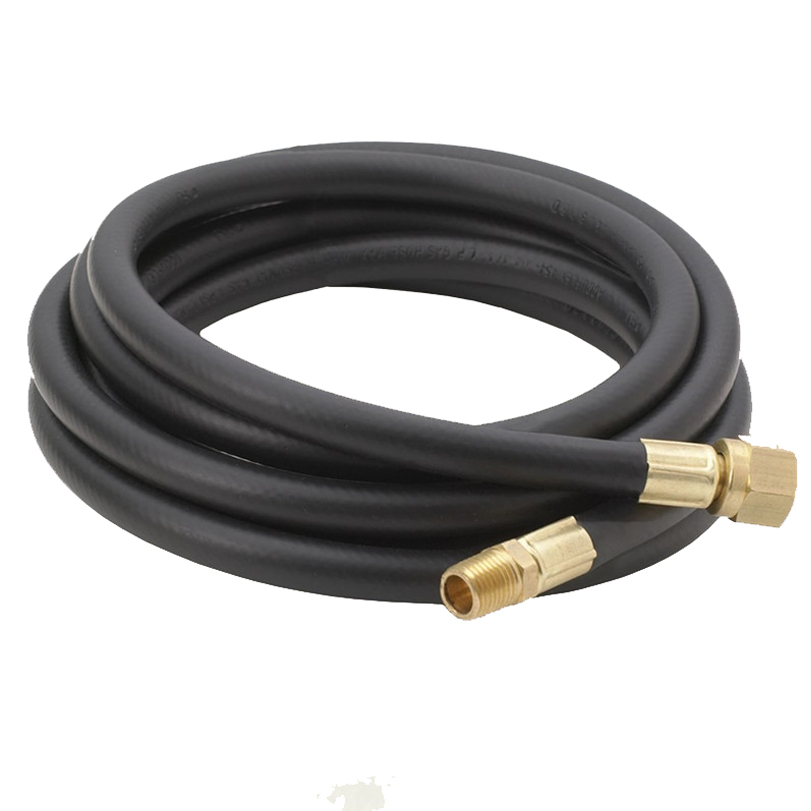335345435
Ara . 17, 2024 05:45 Back to list
gas tank fuel hose
Understanding the Importance of Gas Tank Fuel Hoses in Modern Automotive Design
In the realm of automotive engineering, the gas tank fuel hose plays a vital yet often underestimated role. This essential component connects the fuel tank to the engine, facilitating the flow of gasoline or diesel necessary to power the vehicle. Understanding its function, structure, and maintenance can help car owners appreciate the complexity of their vehicles and ensure longevity and performance.
Function of the Fuel Hose
The primary function of the gas tank fuel hose is to transport fuel from the tank to the engine. This pathway must withstand a variety of pressures and temperatures, as it transfers fuel that is crucial for the vehicle's operation. As fuel is drawn from the tank, either by gravity or through a fuel pump, the hose must maintain a tight seal to prevent any leaks. A leak in this system can lead to hazardous situations, including fire risks or environmental pollution.
Composition and Design
Fuel hoses are typically constructed from high-quality materials that resist degradation. Common materials include rubber, plastic, and other synthetic compounds designed to endure fuel’s corrosive properties. The hoses are engineered to exhibit flexibility for easy routing around other components, yet they need to maintain structural integrity under high pressure.
In addition, fuel hoses are often equipped with reinforcement layers that provide additional strength and protection against kinking or bursting. Today's fuel hoses are designed to meet stringent safety and environmental standards, ensuring they can handle various fuel types, including ethanol-blended fuels which can be particularly corrosive.
gas tank fuel hose

Signs of Wear and Tear
Just like any other component in a vehicle, gas tank fuel hoses are not immune to wear and tear. Over time, exposure to heat, fuel, and environmental factors can lead to deterioration. Common signs of a failing fuel hose include physical cracks, swelling, or leaks. Additionally, owners might notice a strong odor of gasoline, which can be a telltale sign that a hose is compromised. Regular inspection of fuel hoses is crucial, especially in older vehicles, as proactive maintenance can prevent severe issues ranging from performance drops to safety hazards.
Maintenance Practices
To ensure the longevity of a gas tank fuel hose, regular maintenance practices should be adopted. Car owners should consult their vehicle's manual for specific recommendations regarding the replacement intervals for fuel hoses. Additionally, it’s advisable to visually inspect the hoses during routine check-ups, looking for any signs of damage or wear.
While some maintenance tasks can be performed by the owner, others should be handled by a professional mechanic, especially when dealing with fuel systems. Mechanics have the training and tools necessary to safely check for leaks and ensure that the entire fuel delivery system operates optimally.
Conclusion
In summary, the gas tank fuel hose, despite its unobtrusive role within the automotive ecosystem, is crucial for vehicle operation and safety. By understanding its function, recognizing signs of wear, and adhering to maintenance best practices, car owners can safeguard their vehicles against potential issues. Keeping the fuel delivery system in top shape not only enhances performance but also contributes to overall vehicle reliability. As technology continues to progress, future innovations may further enhance the design and functionality of fuel hoses, ensuring that they meet the demands of increasingly sophisticated automotive systems.
-
SAE 100 R17 Black Smooth Cover Hydraulic Hose
NewsMar.07,2025
-
SAE 100 R17 Black Smooth Cover Hydraulic Hose
NewsMar.07,2025
-
SAE 100 R17 Black Smooth Cover Hydraulic Hose
NewsMar.07,2025
-
SAE 100 R17 Black Smooth Cover Hydraulic Hose
NewsMar.07,2025
-
SAE 100 R17 Black Smooth Cover Hydraulic Hose
NewsMar.07,2025
-
steel wire braided hydraulic hose
NewsMar.07,2025



